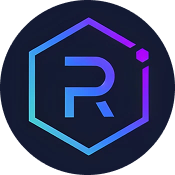In the realm of blockchain technology, high throughput, security, and scalability are the holy trinity that can make or break a platform's adoption. Elrond and Fantom, two innovative networks, have been making waves with their unique approaches to solving these challenges. While Elrond touts its adaptive sharding and secure proof-of-stake, Fantom emphasizes its asynchronous Byzantine fault-tolerant consensus and ecosystem agility. This blog aims to dissect their architectures, use cases, and market positioning to help investors and developers make informed decisions about these promising platforms.
Short on time? Jump to Elrond vs Fantom Comparison
Understanding Elrond and Fantom ?
Elrond positions itself as a scalable, secure, and fast blockchain platform designed for the internet economy, utilizing innovative adaptive sharding and a secure proof-of-stake consensus to achieve up to 15,000 transactions per second with low latency and minimal costs. Its architecture supports a broad spectrum of decentralized applications, including DeFi, NFTs, and IoT solutions, making it versatile for enterprise and consumer use cases alike.
Fantom, on the other hand, is a Layer-1 blockchain that leverages its Lachesis asynchronous BFT consensus mechanism to deliver sub-second finality, high throughput, and robust security. Its compatibility with Ethereum Virtual Machine (EVM) allows seamless integration with existing Ethereum-based applications, while its ecosystem actively supports DeFi, gaming, and NFT projects, driven by a decentralized governance model.
Both platforms aim to address scalability issues inherent in traditional blockchains but do so through fundamentally different architectures—Elrond through horizontal sharding and Fantom through asynchronous consensus—each with its own set of advantages in security, speed, and ecosystem development.
As the blockchain space becomes increasingly competitive, understanding these technological nuances and ecosystem strategies becomes essential for users, developers, and investors looking to leverage their respective strengths for future growth and innovation.
Key Differences Between Elrond and Fantom
Consensus Mechanism
- Elrond: Elrond employs a Secure Proof-of-Stake (SPoS) consensus algorithm that combines randomness and sharding to ensure security and efficiency, enabling high scalability without sacrificing decentralization. Its adaptive sharding divides the network into multiple shards that process transactions in parallel, significantly boosting throughput while maintaining security through cryptographic randomness in validator selection.
- Fantom: Fantom uses its Lachesis asynchronous BFT consensus protocol, which allows validators to reach agreement asynchronously, resulting in fast finality and high throughput. Its architecture supports a DAG-like structure where transactions are processed independently and asynchronously across nodes, reducing bottlenecks and enabling sub-second transaction finality.
Scalability Approach
- Elrond: Elrond's adaptive state sharding horizontally scales the network by partitioning data and transaction processing across multiple shards, which are dynamically managed to optimize performance and security. This allows the network to process thousands of transactions per second, making it suitable for enterprise-level applications and high-demand use cases.
- Fantom: Fantom's approach focuses on asynchronous transaction processing through Lachesis, which enables each validator to operate independently without waiting for other nodes. This reduces latency and increases throughput, maintaining high performance during network congestion and enabling real-time applications.
Ecosystem and Compatibility
- Elrond: Elrond supports multiple programming languages and offers a Virtual Machine that enables developers to deploy smart contracts efficiently. Its ecosystem is expanding through partnerships, DeFi projects, and developer tools aimed at creating a scalable internet economy infrastructure.
- Fantom: Fantom's compatibility with Ethereum's Virtual Machine (EVM) allows existing Ethereum dApps to migrate seamlessly, fostering a vibrant ecosystem of DeFi, NFTs, and gaming projects. Its governance model encourages community participation and ecosystem growth through decentralized proposals and funding initiatives.
Security Model
- Elrond: Elrond’s SPoS consensus combines cryptographic randomness with sharding, ensuring high security levels while maintaining scalability. Validator selection is randomized, reducing risks associated with centralized validator pools and malicious attacks.
- Fantom: Fantom’s Lachesis protocol offers high security through its Byzantine Fault Tolerance, with validators slashed and penalized for malicious behavior or network forks. Its asynchronous design ensures that even in adversarial conditions, the network maintains integrity and speed.
Development and Upgrades
- Elrond: Elrond is actively expanding its ecosystem with updates focused on improving network performance, interoperability, and developer tools, including new partnerships and integrations to support a broad range of decentralized applications.
- Fantom: Fantom emphasizes ecosystem growth through governance-driven proposals, incentivization programs like Gas Monetization, and technical upgrades such as the Fantom Virtual Machine (FVM) and improved storage systems to enhance scalability and user experience.
Elrond vs Fantom Comparison
| Feature | ✅ Elrond | ✅ Fantom |
|---|---|---|
| Transaction Speed | 15,000 TPS with 6-second latency | Sub-second finality (~900 ms) |
| Consensus Mechanism | Secure Proof of Stake (SPoS) | Lachesis asynchronous BFT |
| Ecosystem Compatibility | Supports multiple languages, Virtual Machine | EVM-compatible, seamless Ethereum integration |
| Security Approach | Cryptographically secure sharding and randomized validator selection | Byzantine Fault Tolerance with slashing penalties |
| Main Use Cases | DeFi, NFTs, IoT, enterprise apps | DeFi, NFTs, gaming, scalable dApps |
| Network Upgrades | Ecosystem expansion, interoperability | FVM, storage improvements, governance enhancements |
Ideal For
Choose Elrond: Elrond is ideal for developers and enterprises seeking high scalability, security, and multi-language support for building decentralized applications at scale.
Choose Fantom: Fantom is suited for developers prioritizing rapid finality, Ethereum compatibility, and a flexible, community-driven ecosystem supporting DeFi and real-time applications.
Conclusion: Elrond vs Fantom
Elrond and Fantom both stand out as high-performance blockchain platforms, each with innovative architectures tailored to specific needs. Elrond's adaptive sharding and secure proof-of-stake provide a robust foundation for large-scale enterprise and consumer applications, emphasizing security and scalability. Meanwhile, Fantom’s asynchronous BFT consensus and Ethereum compatibility make it a versatile choice for DeFi projects, real-time dApps, and developers seeking rapid finality and ecosystem flexibility.
Choosing between these platforms depends largely on project requirements—Elrond excels in environments demanding high throughput and security across multiple languages, while Fantom offers speed, ease of integration, and community-driven governance for dynamic decentralized applications. Investors and developers should consider their specific application needs, ecosystem maturity, and future upgrade paths when evaluating these cutting-edge blockchain solutions.






